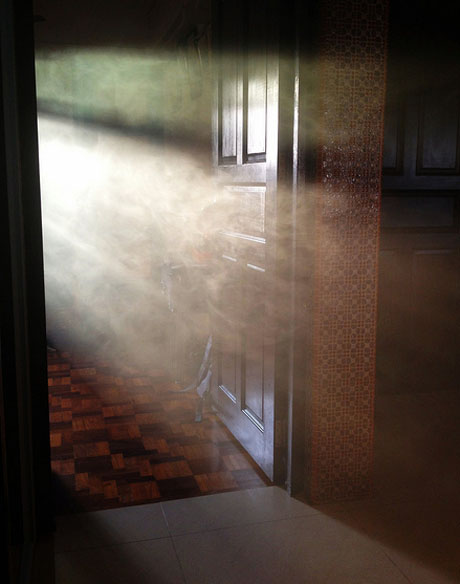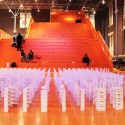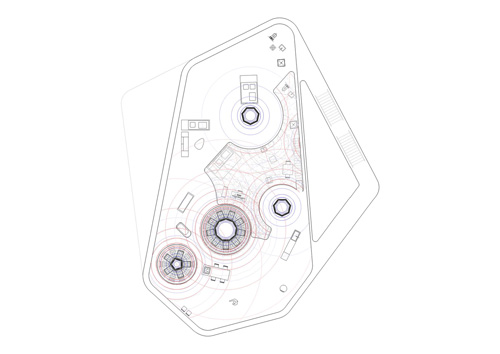Sticky Postings
All 242 fabric | rblg updated tags | #fabric|ch #wandering #reading
By fabric | ch
-----
As we continue to lack a decent search engine on this blog and as we don't use a "tag cloud" ... This post could help navigate through the updated content on | rblg (as of 09.2023), via all its tags!
FIND BELOW ALL THE TAGS THAT CAN BE USED TO NAVIGATE IN THE CONTENTS OF | RBLG BLOG:
(to be seen just below if you're navigating on the blog's html pages or here for rss readers)
--
Note that we had to hit the "pause" button on our reblogging activities a while ago (mainly because we ran out of time, but also because we received complaints from a major image stock company about some images that were displayed on | rblg, an activity that we felt was still "fair use" - we've never made any money or advertised on this site).
Nevertheless, we continue to publish from time to time information on the activities of fabric | ch, or content directly related to its work (documentation).
Sunday, February 01. 2015
Deterritorialized House - Inhabiting the data center, 2014 sketches... | #data #decenter #housing
By fabric | ch
-----
Along different projects we are undertaking at fabric | ch, we continue to work on self initiated researches and experiments (slowly, way too slowly... Time is of course missing). Deterritorialized House is one of them, introduced below.
Some of these experimental works concern the mutating "home" program (considered as "inhabited housing"), that is obviously an historical one for architecture but that is also rapidly changing "(...) under pressure of multiple forces --financial, environmental, technological, geopolitical. What we used to call home may not even exist anymore, having transmuted into a financial commodity measured in sqm (square meters)", following Joseph Grima's statement in sqm. the quantified home, "Home is the answer, but what is the question?"
In a different line of works, we are looking to build physical materializations in the form of small pavilions for projects like i.e. Satellite Daylight, 46°28'N, while other researches are about functions: based on live data feeds, how would you inhabit a transformed --almost geo-engineered atmospheric/environmental condition? Like the one of Deterritorialized Living (night doesn't exist in this fictional climate that consists of only one day, no years, no months, no seasons), the physiological environment of I-Weather, or the one of Perpetual Tropical Sunshine, etc.?
We are therefore very interested to explore further into the ways you would inhabit such singular and "creolized" environments composed of combined dimensions, like some of the ones we've designed for installations. Yet considering these environments as proto-architecture (architectured/mediated atmospheres) and as conditions to inhabit, looking for their own logic.
We are looking forward to publish the results of these different projects along the year. Some as early sketches, some as results, or both. I publish below early sketches of such an experiment, Deterritorialized House, linked to the "home/house" line of research. It is about symbiotically inhabiting the data center... Would you like it or not, we surely de-facto inhabit it, as it is a globally spread program and infrastructure that surrounds us, but we are thinking here in physically inhabiting it, possibly making it a "home", sharing it with the machines...
What is happening when you combine a fully deterritorialized program (super or hyper-modern, "non lieu", ...) with the one of the home? What might it say or comment about contemporary living? Could the symbiotic relation take advantage of the heat the machine are generating --directly connected to the amount of processing power used--, the quality of the air, the fact that the center must be up and running, possibly lit 24/7, etc.
As we'll run a workshop next week in the context of another research project (Inhabiting and Interfacing the Cloud(s), an academic program between ECAL, HEAD, EPFL-ECAL Lab and EPFL in this case) linked to this idea of questioning the data center --its paradoxically centralized program, its location, its size, its functionalism, etc.--, it might be useful to publish these drawings, even so in their early phase (theys are dating back from early 2014, the project went back and forth from this point and we are still working on it.)
1) The data center level (level -1 or level +1) serves as a speculative territory and environment to inhabit (each circle in this drawing is a fresh air pipe sourrounded by a certain number of computers cabinets --between 3 and 9).
A potential and idealistic new "infinite monument" (global)? It still needs to be decided if it should be underground, cut from natural lighting or if it should be fragmented into many pieces and located in altitude (--likely, according to our other scenarios that are looking for decentralization and collaboration), etc. Both?
Fresh air is coming from the outside through the pipes surrounded by the servers and their cabinets (the incoming air could be an underground cooled one, or the one that can be found in altitude, in the Swiss Alps --triggering scenarios like cities in the moutains? moutain data farming? Likely too, as we are looking to bring data centers back into small or big urban environments). The computing and data storage units are organized like a "landscape", trying to trigger different atmospheric qualities (some areas are hotter than others with the amount of hot air coming out of the data servers' cabinets, some areas are charged in positive ions, air connectivity is obviously everywhere, etc.)
Artificial lighting follows a similar organization as the servers' cabinets need to be well lit. Therefore a light pattern emerges as well in the data center level. Running 24/7, with the need to be always lit, the data center uses a very specific programmed lighting system: Deterritorialized Daylight linked to global online data flows.
2) Linked to the special atmospheric conditions found in this "geo-data engineered atmosphere" (the one of the data center itself, level -1 or 1), freely organized functions can be located according to their best matching location. There are no thick walls as the "cabinets islands" acts as semi-open partitions.
A program starts to appear that combines the needs of a data center and the one of a small housing program which is immersed into this "climate" (dense connectivity, always artificially lit, 24°C permanent heat). "Houses" start to appear as "plugs" into a larger data center.
3) A detailed view (data center, level -1 or +1) on the "housing plug" that combine programs. At this level, the combination between an office-administration unit for a small size data center start to emerge, combined with a kind of "small office - home office" that is immersed into this perpetually lit data space. This specific small housing space (a studio, or a "small office - home office") becomes a "deterritorialized" room within a larger housing program that we'll find on the upper level(s), likely ground floor or level +2 of the overall compound.
4) Using the patterns emerging from different spatial components (heat, light, air quality --dried, charged in positive ions--, wifi connectivity), a map is traced and "moirés" patterns of spatial configurations ("moirés spaces") start to happen. These define spatial qualities. Functions are "structurelessly" placed accordingly, on a "best matching location" basis (needs in heat, humidity, light, connectivity which connect this approach to the one of Philippe Rahm, initiated in a former research project, Form & Function Follow Climate (2006). Or also i.e. the one of Walter Henn, Burolandschaft (1963), if not the one of Junya Ishigami's Kanagawa Institute).
Note also that this is a line of work that we are following in another experimental project at fabric | ch, about which we also hope to publish along the year, Algorithmic Atomized Functioning --a glimpse of which can be seen in Desierto Issue #3, 28° Celsius.
5) On ground level or on level +2, the rest of the larger house program and few parts of the data center that emerges. There are no other heating or artificial lighting devices besides the ones provided by the data center program itself. The energy spent by the data center must serve and somehow be spared by the house. Fresh and hot zones, artificial light and connectivity, etc. are provided by the data center emergences in the house, so has from the opened "small office - home office" that is located one floor below. Again, a map is traced based and moirés patterns of specific locations and spatial configurations emerge. Functions are also placed accordingly (hot, cold, lit, connected zones).
Starts or tries to appear a "creolized" housing object, somewhere in between a symbiotic fragmented data center and a house, possibly sustaining or triggering new inhabiting patterns...
--------------------------------
Project (ongoing): fabric | ch
Team: Patrick Keller, Christophe Guignard, Christian Babski, Sinan Mansuroglu
Friday, April 25. 2014
ECAL students create bizarre smart home objects in Milan | #smart?
Before you'll start reading, let me add a missing information: the projects were developed during a full semester by 2nd year bachelor students at the ECAL, under the direction of Profs. Chris Kabel (product design) and Alain Bellet (interaction design).
Via It's Nice That
-----
By Rob Alderson

Léa Pereyre, Claire Pondard, Tom Zambaz: Mr Time (Image By ECAL/Axel Crettenand & Sylvain Aebischer)
It’s laudable that designers are working on worthy projects that will have a practical impact on building a better future, but we’re big believers that creatives should be engaged in making tomorrow a bit more fun too. Luckily for us, there are institutions like the Ecole cantonale d’art de Lausanne (ECAL).
At this year’s Milan Salone, ECAL’s Industrial Design and Media & Interaction Design students unveiled a series of weird and wonderful objects that presented “a playful interpretation take on the concept of the smart home.” These included a clock that mimics the gestures of those looking at it, cacti that respond musically to being caressed, a pair of chairs one of which reacts to the movements of the sitter in the other, a tea spoon that won’t be separated from its mug and a fan that is powered by the amplified breath of the homeowner.
It’s fair to say that some of these creations are completely impractical, but they all raise questions about our future interaction with household objects and they do so in the quirkiest way possible.







Related Links:
Tuesday, June 26. 2012
Urban Probiotics

IMAGE: Gut flora redesign, using a yogurt vehicle, is already a commonplace activity at breakfast tables around the world.
For many, the consumption of probiotic supplements is already a daily routine — a regular, intentional, and frequently yogurt-based effort to re-design our intestinal flora. This makes sense: the five hundred (or so) different species of bacteria living inside our guts have an important influence on everything from our ability to digest certain foods to our emotional well-being and behaviour.
Doses of “friendly” bacteria have already been shown to cure chronic digestive illnesses, and, according to Professor John Cryan of the Alimentary Pharmabiotic Centre at University College, Cork, it’s highly likely that they will soon be used to treat “stress-related psychiatric disorders such as anxiety and depression.” These beneficial microbes are typically consumed orally, either dried and encapsulated in supplement form or cultured in a dairy base, although in extreme situations they can also be introduced directly to the colon using the somewhat horrifying-sounding technique of fecal transplant.

IMAGE: Probiotic bacteria.
Last month, however, scientists at the University of Toronto announced the results of a study that examined both babies’ gut bacteria and the bacteria present in dust samples from their homes. To their surprise, they found a significant overlap, suggesting, as Jessica Hamzelou writes in New Scientist, that babies “may be sharing their gut bacteria with the environment and vice versa.”
Extrapolating from this, public health researcher Pilar Francino goes on to speculate that “people living in the same dusty house may also share health and behavioural characteristics.”

IMAGE: A dusty house, via.
In other words, just as the colour of your walls has been shown to affect your heart rate and blood pressure, your home’s bacterial biome may be making you obese and anxious — or, of course, healthy and happy.
Forget yogurt or fecal transplants — it seems to be only a matter of time before we are able to intentionally inoculate our homes with custom blends of bacteria in order to redesign our gut flora. Designer dust will take its place alongside formaldehyde-free furniture polish and low VOC paint for the responsible homeowner.

IMAGE: A dust cloud envelopes a city, via.
Perhaps, given the rising cost of obesity-related diseases combined with the increasing occurrence of allergies, environmental bacteria supplementation will come to be seen as a public health issue, with sanitation crews spraying down pavements and gutters with a fine layer of dried lactobacilli each week.
Meanwhile, somewhere, someday, the Bazalgette of urban probiotics will install a city-wide enteric enhancement program, combining a biotic sensor network and precision bifidobacteria crop-dusting drones in order to transform the city’s streets, transit network, and shared spaces into a giant, shared digestive supplement.
Friday, November 25. 2011
Exhibition: Open the Tower
Via Archinect
-----
de Sebastian J

Open the Tower Exhibition
Our friends from the Iceland Design Centre Blog shared with us this interesting news. Open the Tower exhibits 676 models in a scale of 1:1000 designed by Eurohigh. The project was led by architect Winy Maas, Alexander Sverdloy and Anja Molenda of The Why Factory in collaboration with KRADS and supported by Lego and Arup.
The exhibition is the result of a 2-month-long research period on the ultimate European skyscraper, and the models are presented in a grid of 26 linear iterations. This exhibition is on display at the Tu Delft Faculty of Architecture in Rotterdam. This work will continue until January 2012 and it will be in continous exhibition until February 2012.
More images after the break. Original article: http://blog.icelanddesign.is/krads-open-the-tower/.







Tuesday, November 16. 2010
Architecture Fiction: Badly Printed Printable Housing
http://zeitguised.wordpress.com/2010/11/08/concrete-misplots/
“Featured in Swiss architectural magazine Hochparterre’s “Raumtraum” section, these visualizations of future architectures search for the accidental in computer driven manufacturing processes.
“Based on iconic housing shapes, these buildings were intended as prototypes for mass-customization. Yet, as things go with computerized manufacturing, there have been misplots. The cartridge was not loaded properly. The concrete was set to the wrong parameters or scale. The printer module falsely translated a data set…
“These misprints are the rejects of this early process, and they are now being used as shared homes by elderly people from the former squatter scene….”

Related Links:
Thursday, February 08. 2007
Christophe Guignard "Contemporary space(s)" (Lift07 EN)
-----
Founding member Christophe Guignard speaks for fabric | ch during Lift 2007 in Geneva. Subject of the talk: Contemporary space(s).
fabric | rblg
This blog is the survey website of fabric | ch - studio for architecture, interaction and research.
We curate and reblog articles, researches, writings, exhibitions and projects that we notice and find interesting during our everyday practice and readings.
Most articles concern the intertwined fields of architecture, territory, art, interaction design, thinking and science. From time to time, we also publish documentation about our own work and research, immersed among these related resources and inspirations.
This website is used by fabric | ch as archive, references and resources. It is shared with all those interested in the same topics as we are, in the hope that they will also find valuable references and content in it.
Quicksearch
Categories
Calendar
|
|
July '25 | |||||
| Mon | Tue | Wed | Thu | Fri | Sat | Sun |
| 1 | 2 | 3 | 4 | 5 | 6 | |
| 7 | 8 | 9 | 10 | 11 | 12 | 13 |
| 14 | 15 | 16 | 17 | 18 | 19 | 20 |
| 21 | 22 | 23 | 24 | 25 | 26 | 27 |
| 28 | 29 | 30 | 31 | |||





